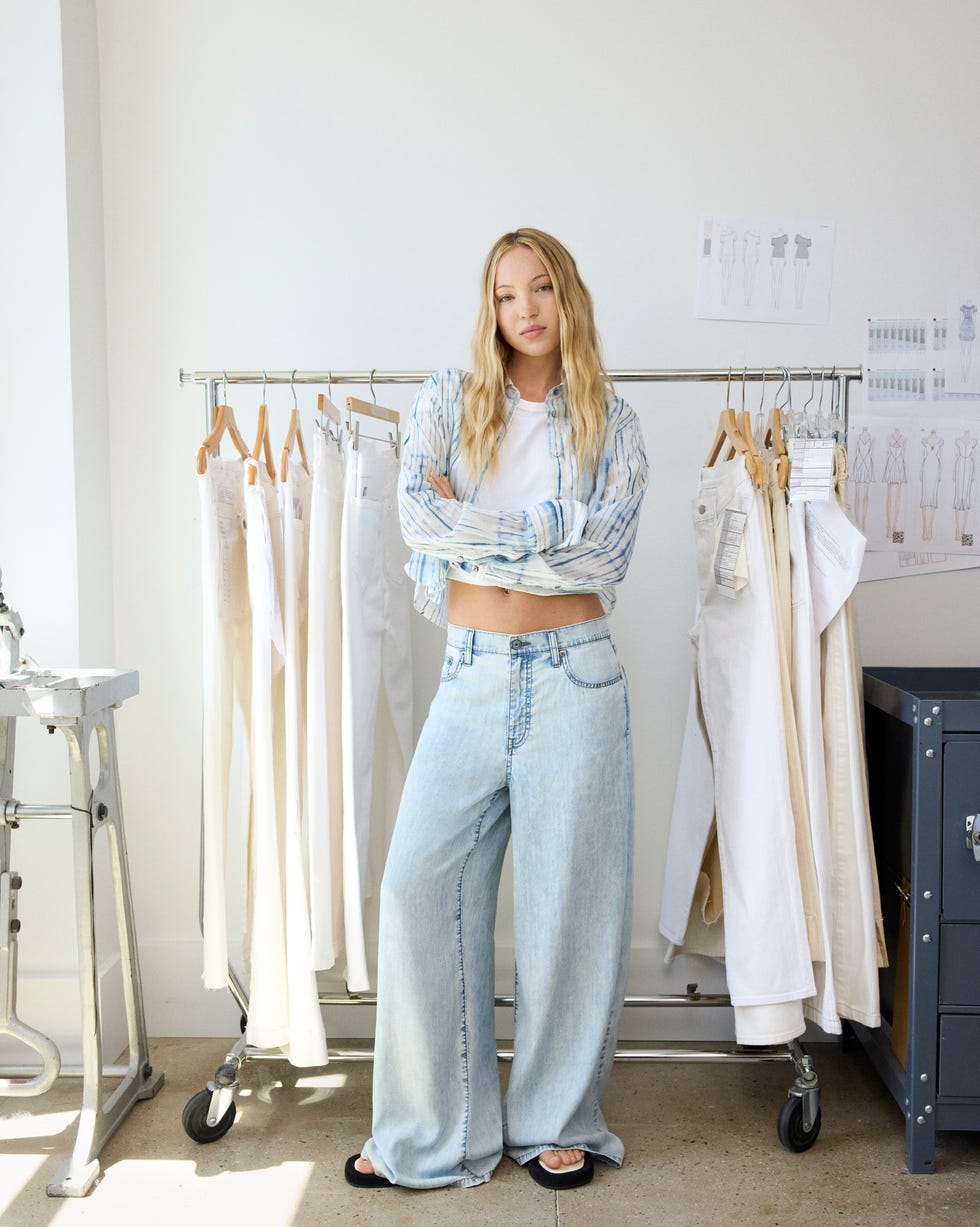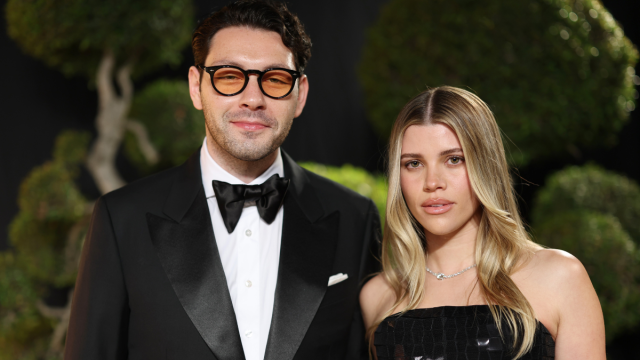Zac Posen, the smiling conqueror of the red carpet, has been up to something a little different lately. With his appointment as the chief creative officer of Old Navy and creative director of Gap Inc. in February of 2024, the designer was tasked with revitalizing a massive heritage brand. In just a little over a year, Posen, who can also point to his ready-to-wear experience as creative director of Brooks Brothers, has launched GapStudio (a brand atelier of elevated staples), ushered in a subtle aesthetic shift, and signaled that the “mall brand” renaissance is finally here.
Many of Gap’s peers have re-found their footing within new niches. Abercrombie & Fitch pivoted to TikTok influencers and released pieces across an inclusive range of sizes. In 2021, J.Crew tapped Noah co-founder Brendon Babenzien to head up menswear, in an effort to revitalize the brand by capitalizing on his downtown New York appeal. More recently, J.Crew also rebooted its beloved catalog and delved into high-end, cult-following-driven collaborations with designers including Christopher John Rogers and Maryam Nassir Zadeh. However, no “mall brand” conversation would be complete without the retail giant that is Gap Inc., and it is precisely why Posen’s and Gap’s fans are paying so much attention.
Many are nostalgic for the simple-but-cool appeal of ’90s and early 2000s-era Gap, much of which was attained through its high-fashion-like commercial advertising. Celebrities such as Whoopi Goldberg, Madonna and Missy Elliott, along with supermodel Naomi Campbell, fronted campaigns shot by fashion greats like Patrick Demarchelier and Annie Leibovitz. With so much star power, there was an undeniable aspirational appeal.
“You would see them put these famous people in their ads in very simple clothes, and it was this interesting way to say ‘You can have this look, too,’ because they would be in a $14.99 hoodie, for example,” Liana Satenstein, a fashion writer and founder of the shopping series Neverworns, tells ELLE. In 1993, Gap even launched its famous “Who Wore Khakis” campaign, which utilized archive images of cultural figures like Miles Davis, Salvador Dalí, and James Dean all sartorially equalized by a single everyday item of clothing.
Though the marketing landscape and celebrity culture have vastly changed since then, within Posen’s brief tenure, parallels can be drawn. His creative directorial debut began with something true to his heart as a designer, a red carpet rollout that included Da’Vine Joy Randolph at the 2024 Met Gala and Anne Hathaway’s instantly shoppable shirtdress at a Bulgari event last May. The looks lent themselves to the budding excitement for GapStudio, which officially debuted in April of this year.
“We’ve only done a few red carpet looks so far, but each one has been a powerful way to express GapStudio’s creative potential. Red carpet dressing is a kind of high-frequency communication—it lets us amplify the brand codes through an artistic lens,” Posen explains. For the designer, each look, whether it be Demi Moore’s goddess gown at the Time100 Gala or Laura Harrier’s recent Met Gala suit, provides a platform for the brand’s new house codes.
Current offerings from GapStudio’s summer drop include draped denim trousers, a light-wash denim dress, easy slip dresses, and on-trend off-the-shoulder tops. Posen adds, “These moments are rooted in the same language: American classics, reimagined through construction, elegance, and wit. They’re about taking familiar pieces and distorting them into something special.” By opening the design dialogue between the red carpet and the mass market, this strategy recalls the “they’re just like us” mentality that Satenstein noted. In both 1996 and 1998, Sharon Stone caused a stir arriving to the Oscars wearing a Gap shirt paired with her Armani jacket and Vera Wang skirt, respectively. Controversial at the time, the blending of relaxed, classic day-to-day aesthetics with red carpet glam has made both appearances some of the most iconic Oscars looks of all time.
Add on a handful of collaborations with hugely popular independent brands like Dôen and Cult Gaia, and customers are noticing a tangible shift in designs across the company, too. New York City-based content creator Kelsey Kotzur recently went viral for a pink bubble-hemmed dress that she found at Old Navy. “He’s taking the heart of Old Navy/Gap and putting his expertise behind it and creating something incredible,” she tells ELLE. For Kotzur, who worked at both stores throughout high school and college, the fact she can now find an on-trend, evening edit-inspired dress for under $50 at the retailer is surprisingly refreshing. The shift in offerings has been subtle and pleasant, or as Posen explains, “Not through an overnight transformation, but through thoughtful evolution.”
Recent ads are also reflective of this nostalgic, real-life celebrity appeal. In May, Old Navy tapped a star-studded cast, including ELLE’s Summer Issue cover star Lindsay Lohan, Dylan Efron, Quen Blackwell, and Charo, for a retro workout video, titled “Old Navy, New Moves.” The campaign was shot by fashion photographer Ethan James Green and directed by Torso. Coinciding with Posen’s appointment, Gap brought back its dancing commercials, featuring Tyla and Jungle’s viral hit “Back on 74”—signaling a re-ignition of the videos that heavily contributed to its advertorial influence in the ’90s. Since then, Gap has continued dancing its way through digital marketing, producing campaigns starring The White Lotus’s Parker Posey and Troye Sivan. Not to mention Lila Moss, the ultimate Gen Z iteration of ’90s iconography, fronting GapStudio’s summer 2025 campaign.
Turns out, Posen’s design identity has more in common with the label’s ’90s era than one might think, and it’s an aura that the company is undoubtedly working to recapture. “There’s this amazing intersection of ’90s sportswear, New York grunge, late-’30s futurism, and uptown/downtown energy—all of which shaped me growing up. We’re looking at how that aesthetic, that attitude, can live in today’s world,” he says. As for what we can look forward to at GapStudio, he adds, “At its core, it’s about building an elevated capsule wardrobe that feels personal, cultural, and timeless—designed to live in your life and also be remembered.”





